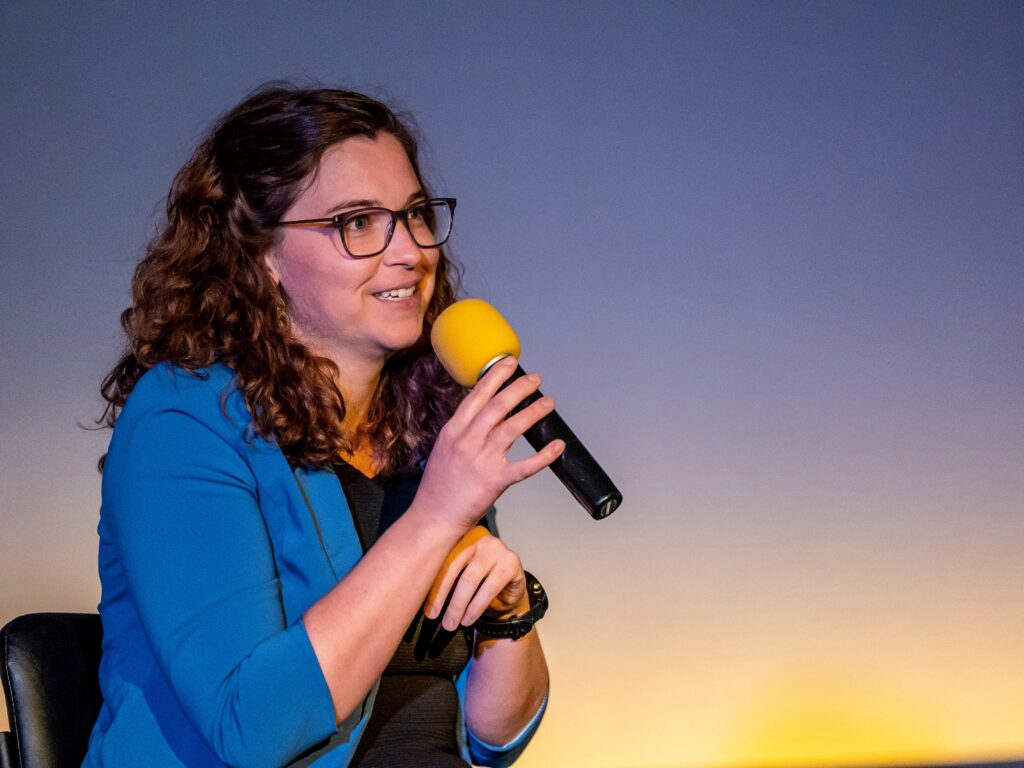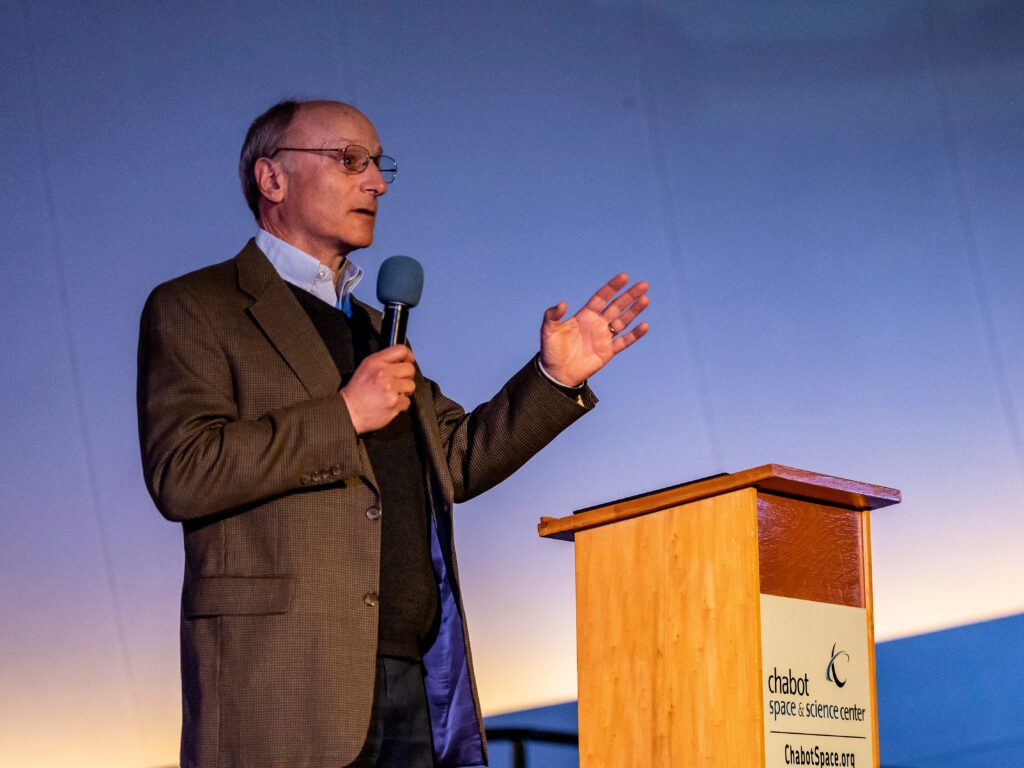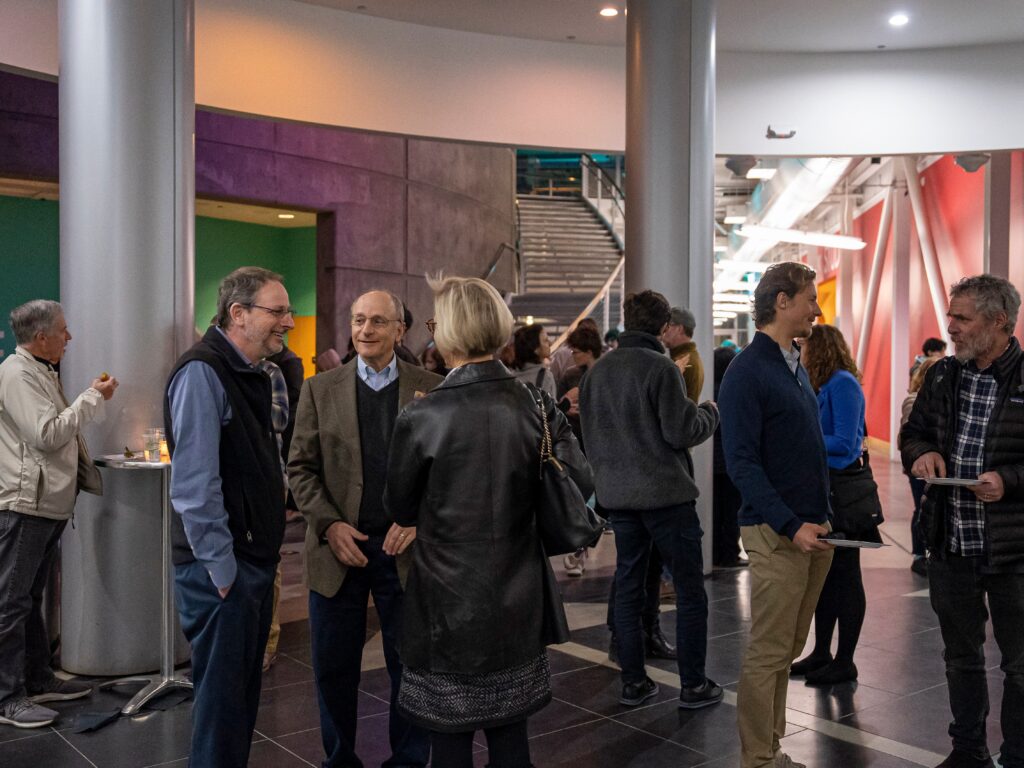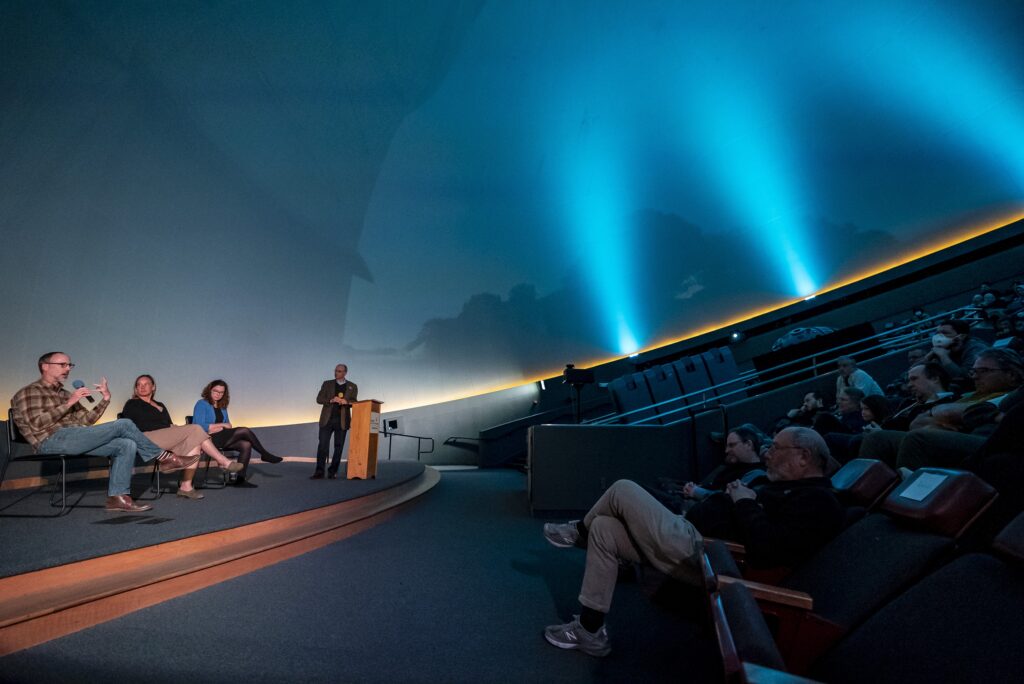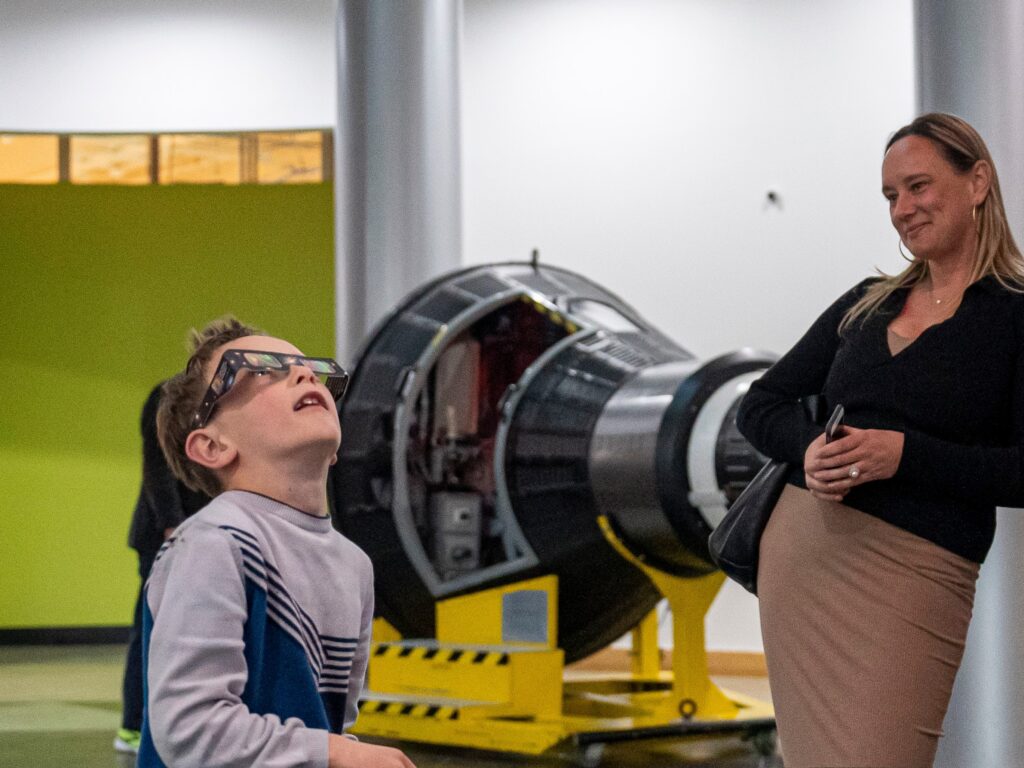Claire Lamman, Harvard University
April 7, 2023
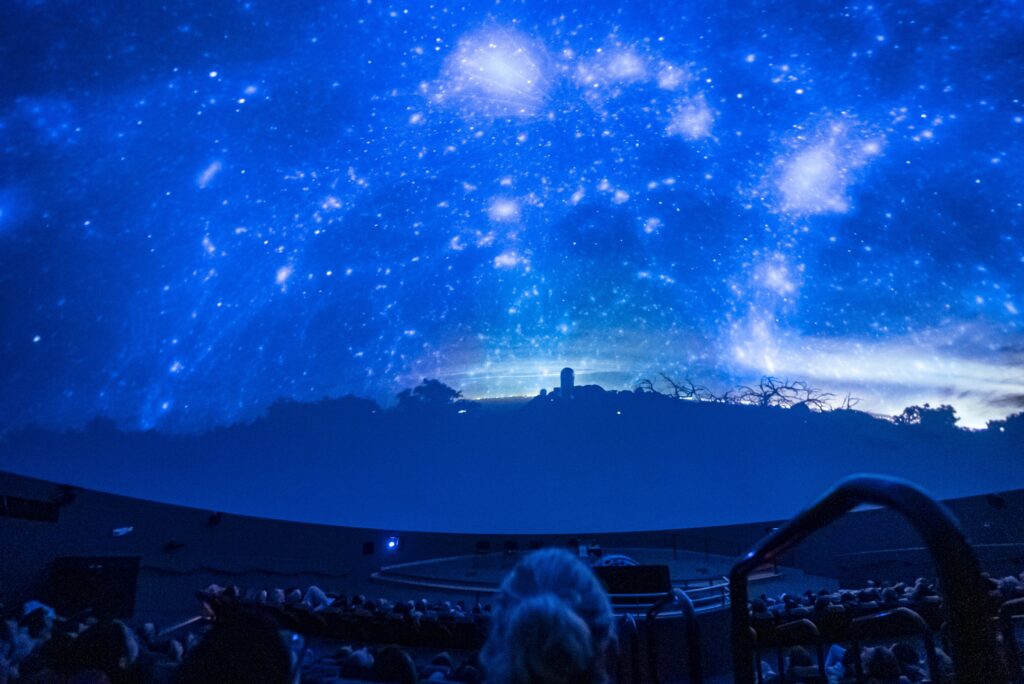
DESI’s planetarium show, “5000 Eyes”, was recently released to the public. It will be shown in hundreds of planetariums around the world and translated into ten languages. The support and contributions of many DESI members grew this project far beyond the little film I initially imagined. Here is how “5000 Eyes” went from the daydream of a first-year graduate student to a global production.
A couple months after delivering my final show at Fiske Planetarium, I was sitting in a session at DESI’s 2019 summer collaboration meeting. I had committed to starting graduate school at Harvard in the fall but was undecided about a research path. I was new to cosmology and just starting to learn about DESI. When a talk started to go over my head, which was often, I imagined what a planetarium show about DESI might look like.
Kitt Peak was building an outreach center and I thought it would be nice to record myself giving a short planetarium talk about DESI that could be shown at the center. A leader from our Education and Public Outreach Committee, Parker Fagrelius, encouraged me to reach out to DESI’s director, Michael Levi, and seek funding from the DESI Institutional Board. With the enthusiastic support from Parker and Michael, I formulated a proposal to create a small planetarium film. My idea was to use as much existing media as possible—such as 3D models of the Mayall telescope, footage on Kitt Peak, and DESI data, to make the best use of any resources given to the project. It received unanimous support from the Institutional Board and I found myself, a graduate student still unsure about what my thesis would be on, in charge of a full-scale production.
Fortunately, I helped Fiske make a series of short films during my time as an undergrad at CU Boulder and generally knew what went into making a planetarium film. I developed a script based on the media available and what I knew of Fiske’s software. After many iterations on the script and feedback from DESI people, we began working with Fiske to produce the movie.
There is so much to say about DESI (just check out all the blog posts below this one!), so it was not easy to decide what to include in a 20 minute movie. One idea we wanted to make sure to communicate was that advances in modern cosmology don’t magically spring from the minds of a couple scientists. It takes many people, including many young people, with a variety of backgrounds. We came up with a selection of six DESI members from four continents. The international participants all found ways to get high-quality recordings themselves! For those of us in the U.S., we were able to coordinate an in-person shoot on Kitt Peak.
Our visit to Kitt Peak was my favorite part of making the film. We had two days with the videographer from Fiske to shoot interviews and capture footage of the telescope and mountain. During this time, the Kitt Peak Staff was especially helpful and accommodating. I was even able to carry out one of my support observing shifts in person. Up until this trip, I was hesitant about representing DESI as such a new member. But observing on the mountain made me feel like I was truly part of the collaboration for the first time.
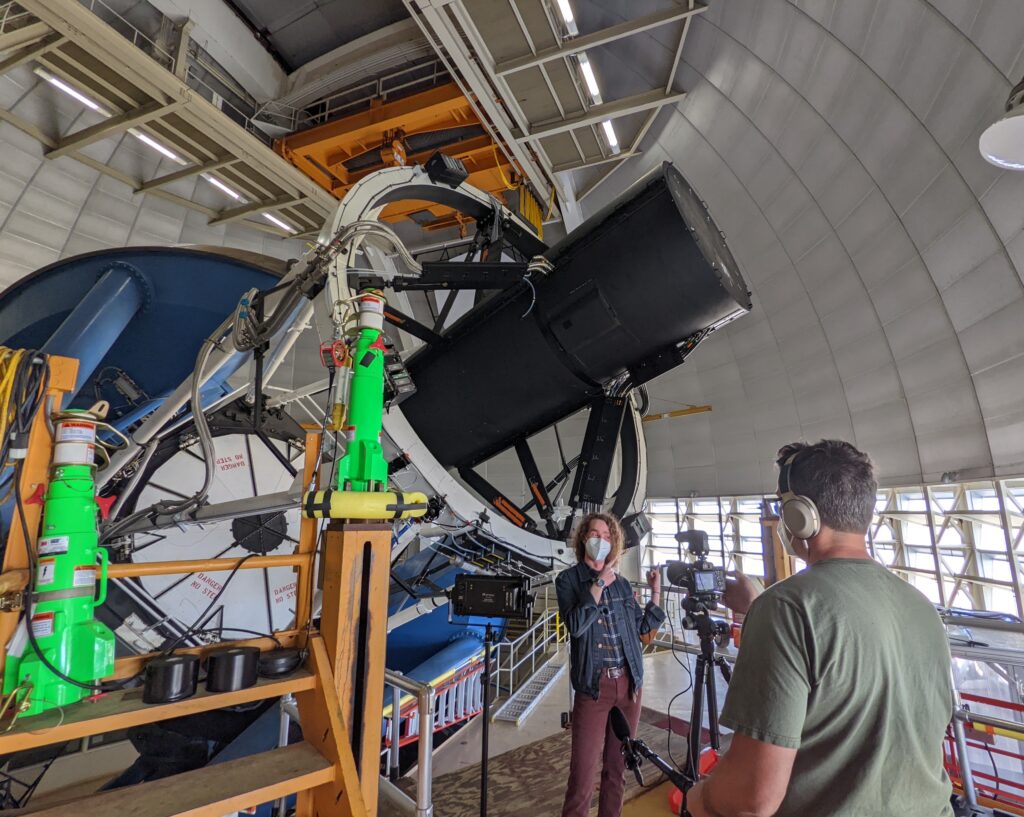
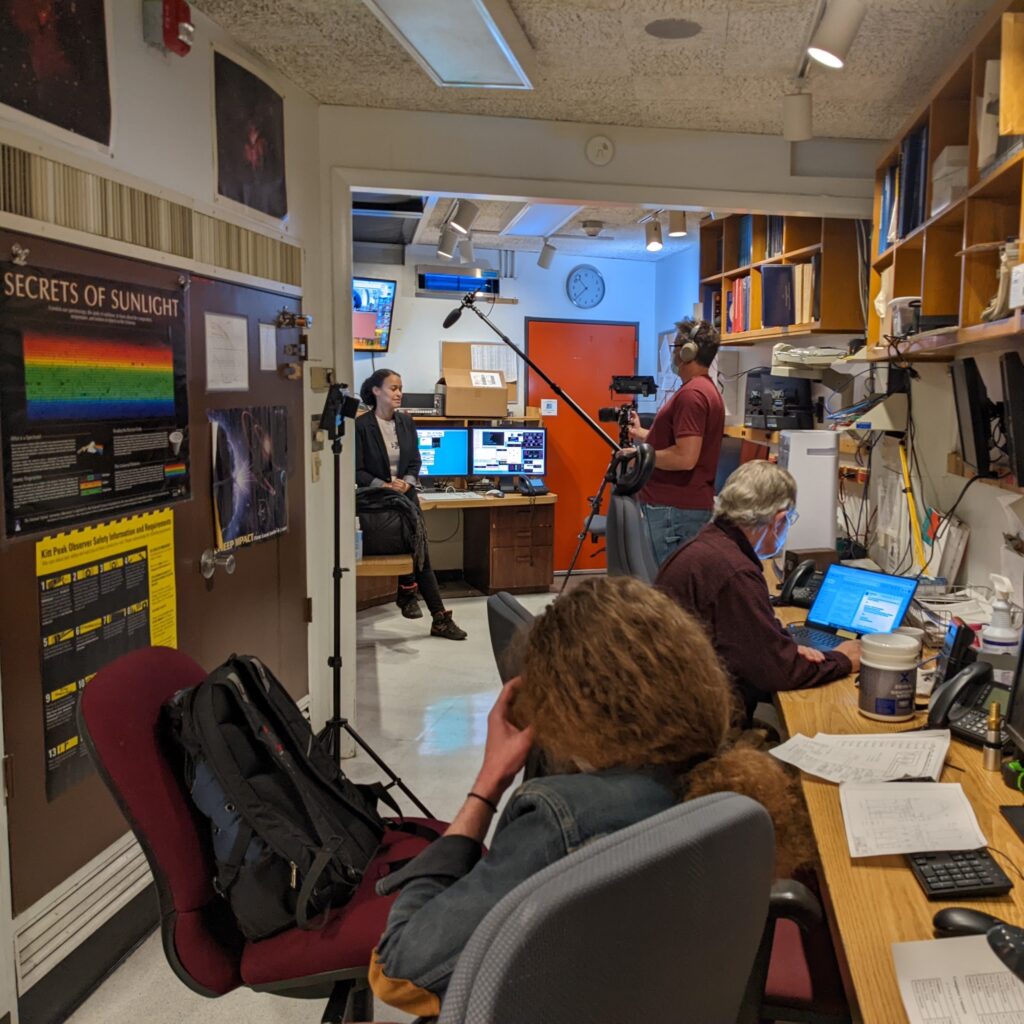
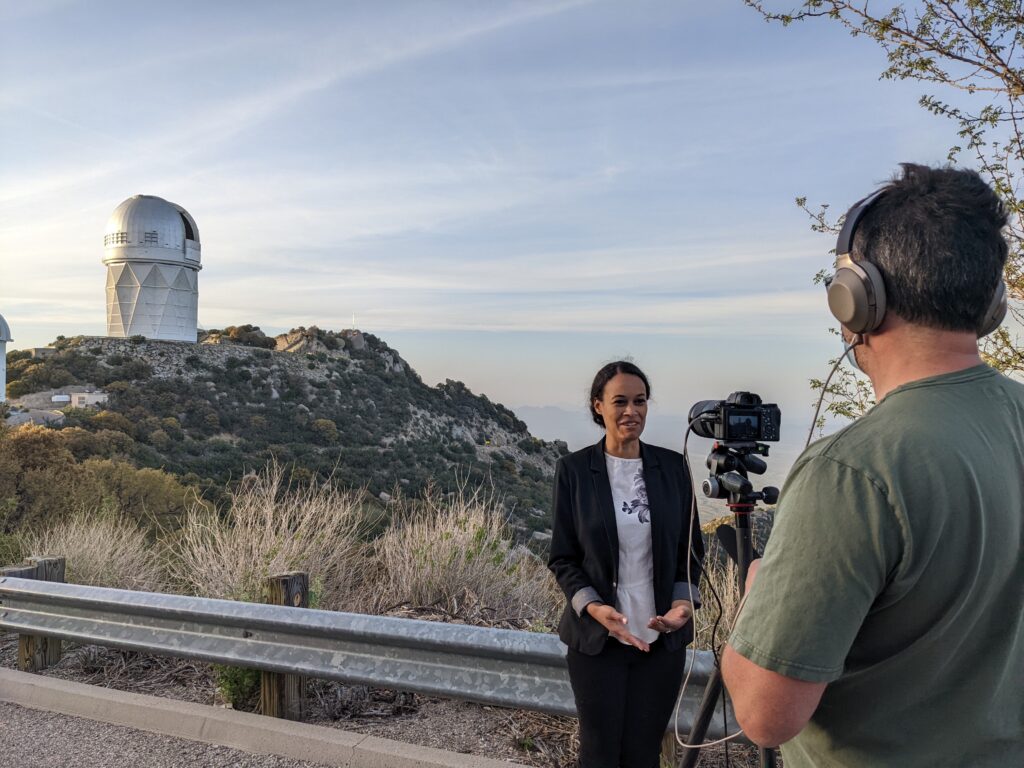
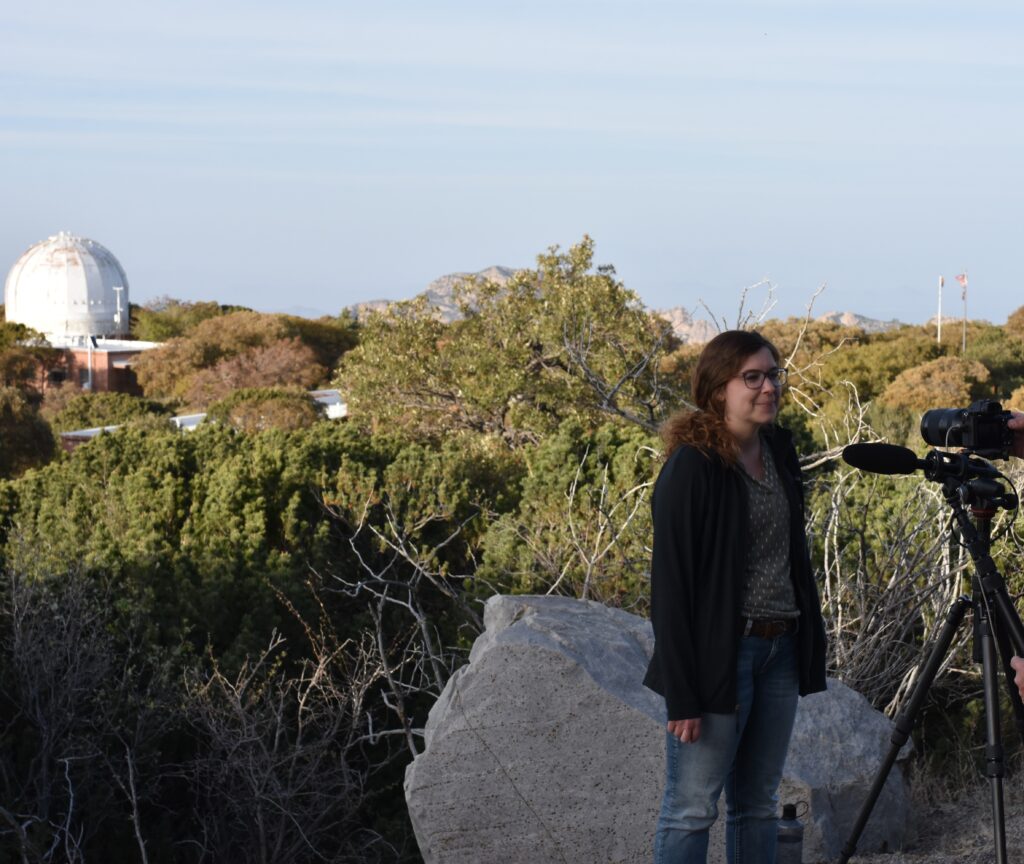
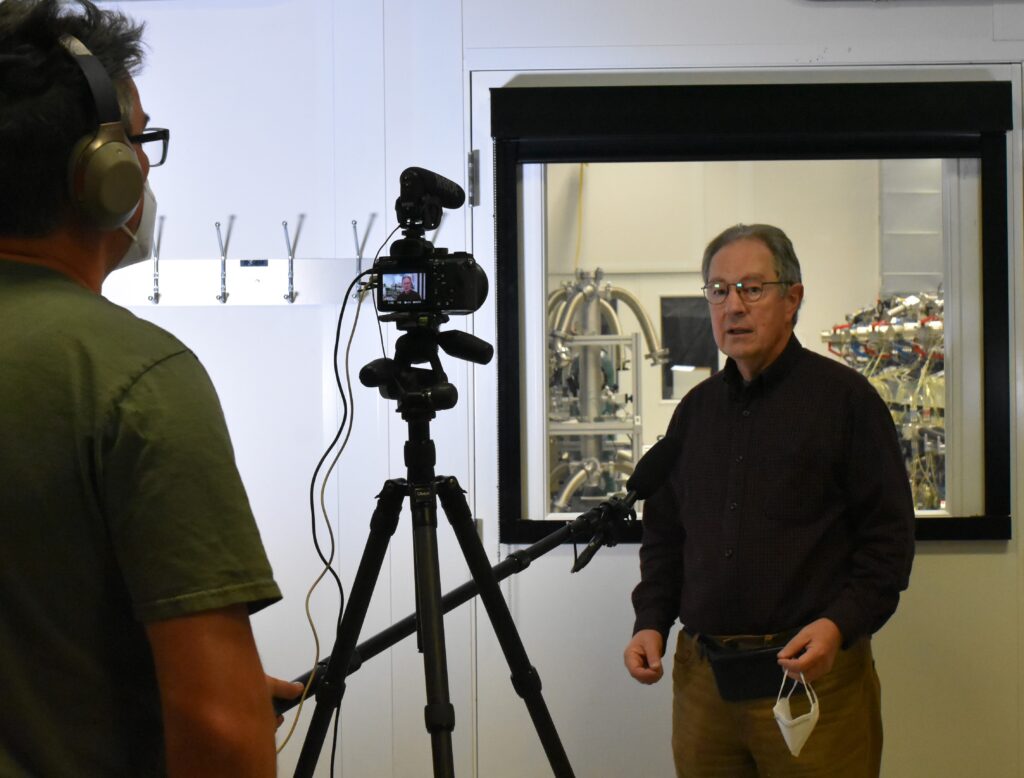
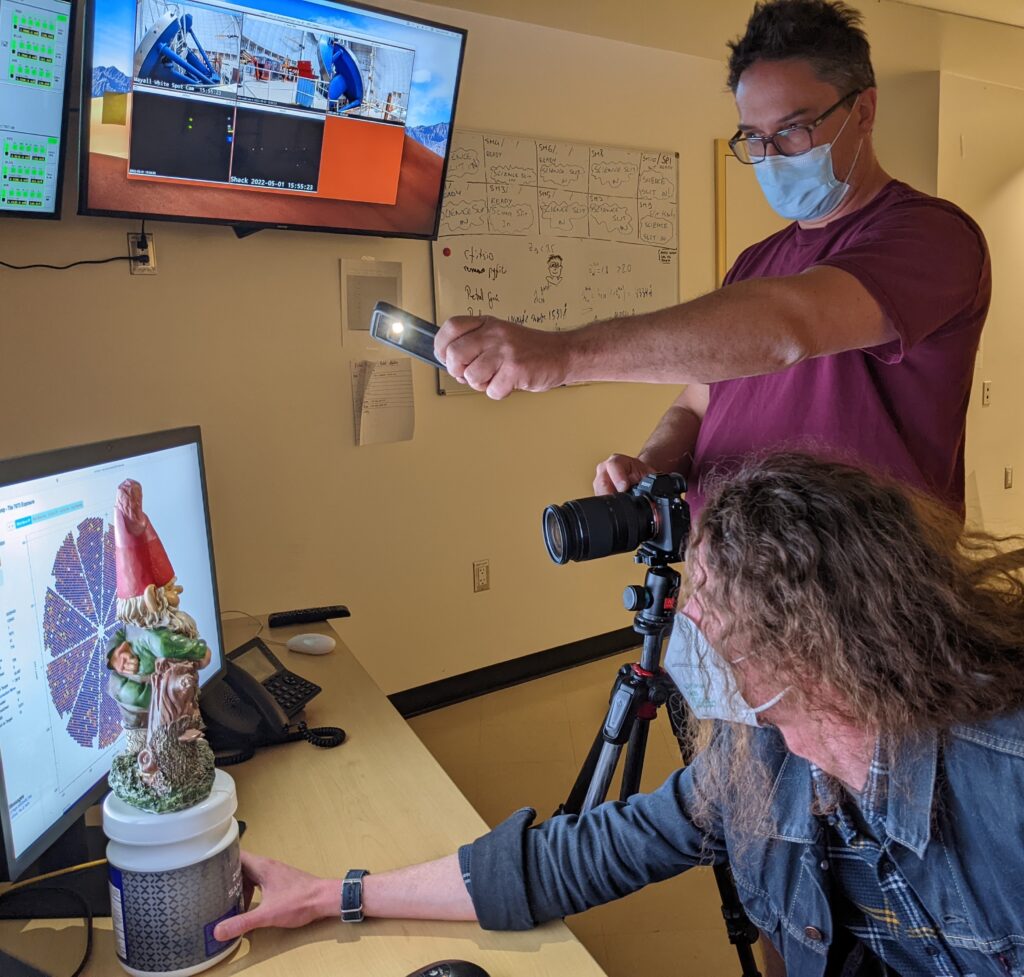
As main production ramped up, I directed the Fiske team and coordinated some additional contributions of DESI members. In particular, once I found out that David Kirkby could make a moving 3D model of the focal plane, I knew we absolutely had to include it. Who doesn’t want to fly through a forest of robots?? He put in an impressive amount of work to faithfully bring the focal plane to life and create a memorable scene.
Fiske’s team was also very excited about the film, especially once we had the go-ahead to use galaxy positions from DESI’s full year one data. This was somewhat of a technical challenge, since they were determined to render every single galaxy and, unlike DESI, did not have access to a supercomputer! The resulting fly-through is stunning. All the time I spent using DESI data in my research did not compare to soaring through the most detailed map ever made of our nearby universe in a planetarium. I am very impressed with the work of Fiske’s production team.
Because DESI is an international collaboration, it was important to make the film widely available and in multiple languages. Many DESI members have volunteered to help create translations. As of the writing of this blog, there are plans to translate the film into 10 different languages! Small planetariums all over the world are excited to have access to a free film in their local language. The film’s download site also includes an educational guide and outreach package filled with additional material that DESI people have put together. Our science will reach a large, diverse audience thanks to the work of our collaboration!
It has been exciting to see the ways that DESI members are using this film to engage with their local communities. At the premieres, it’s also been a joy to see our family members, especially kids, get a glimpse into what we work on. Looking back, it’s a bit staggering to see how much this project has grown and how many people contributed. This truly is a film about DESI, by DESI!
As of the writing of this blog, the film has been downloaded by 112 planetariums in 31 states and 24 countries.
